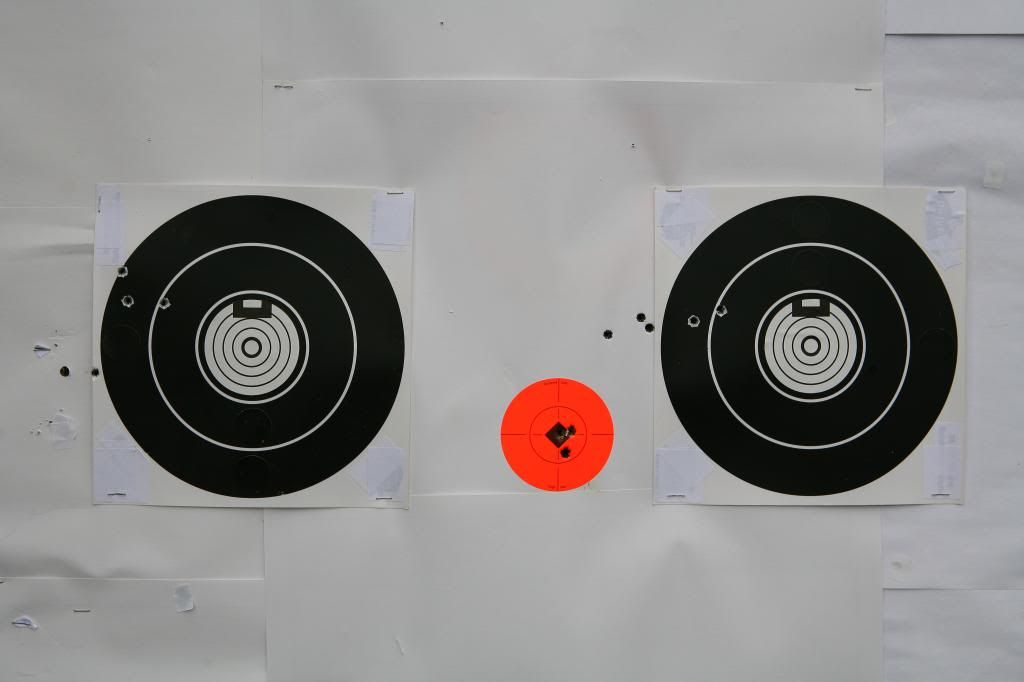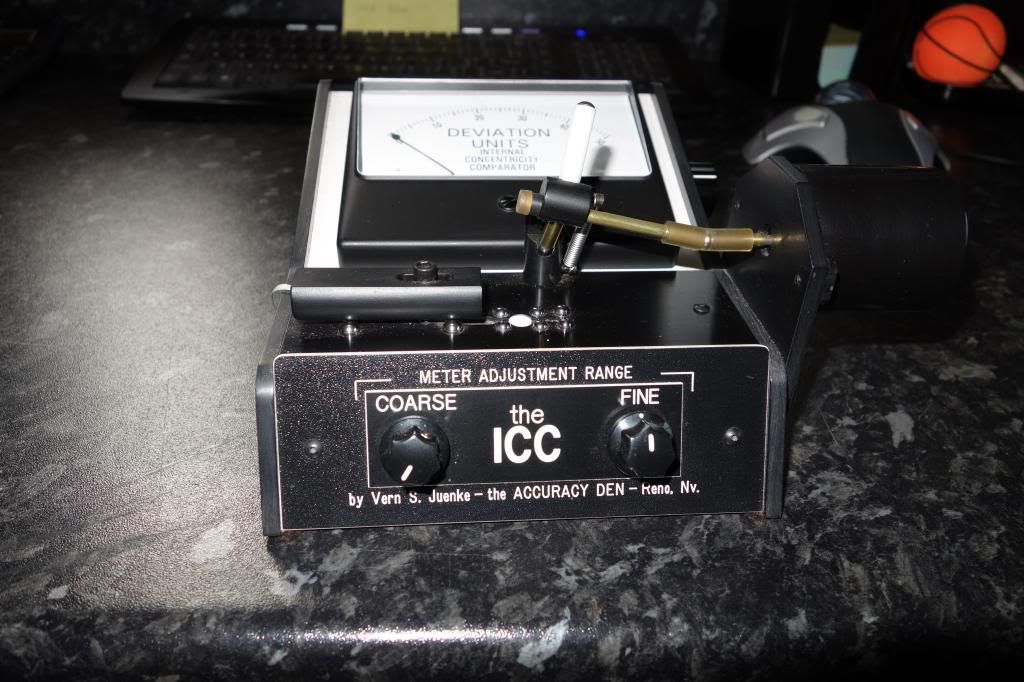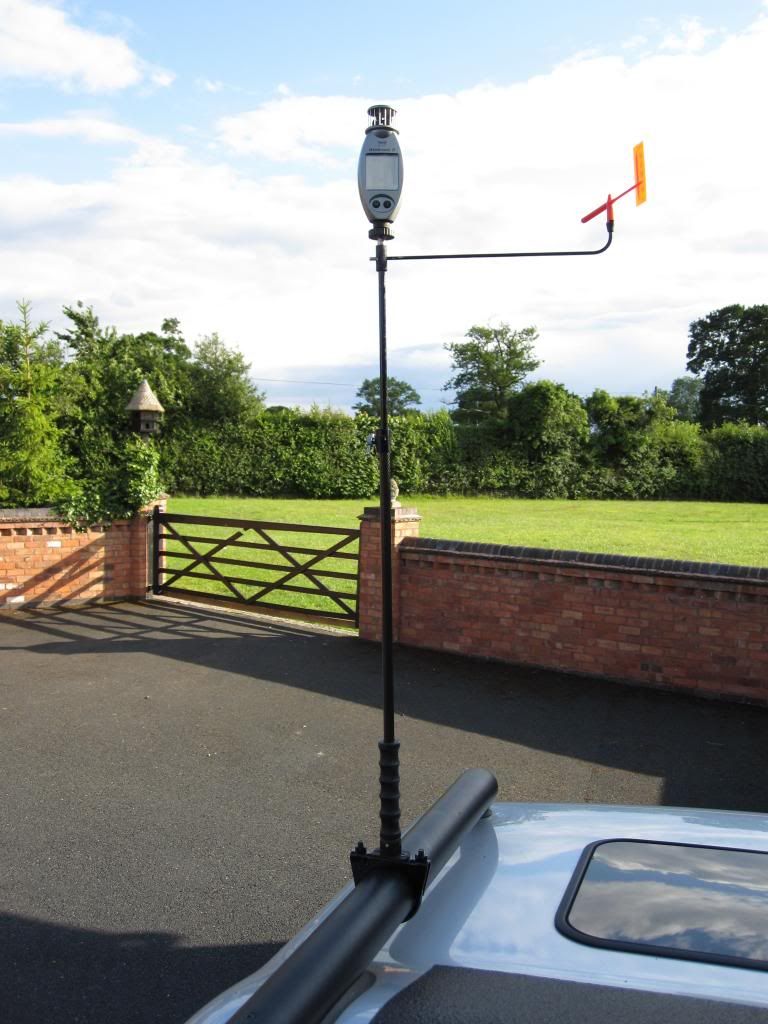I didn't say that altering the bullet weight had the greatest down range effect but however small the effect there will be one . I agree that bearing surface is another factor but I would expect serious long range shooters to only buy there bullets in bulk from the same batch , then batch from there and then run them through a Junke machine .
I like the test idea but if I'm understanding the main purpose of it I can't see how any difference in velocity can be said to be only down to bearing surface as there are so many other factors that effect velocity .
First of all, where did you find a Juenke machine? I wrote last year and if I remember correctly, Vern died and nobody took up the reins. Those seem to be more mythical than a Prometheus II scale. As for bulk, I've only found 77gn SMKs in batches of 500, so my current 2000 processed bullets are from 4 batches. I agree that I find a VERY large and bothersome difference between batches. I tried the JLK route and bought 1000 80gn JLK VLDs, but unfortunately my 1:8 barrel doesn't like 80gn bullets (group opens up at least .5moa over 77gn SMKs.) As for improving velocity differences, I'm all ears. This batch, with an ES of 15 and SD of 4.73 is my best so far, but I'm always looking for ways to improve on that. I've heard of people getting single digit spreads. What am I still missing?
Here is my current reloading routine, in this order, I trim meplats on a Hoover trimmer
Precision Reloading Equipment, repoint in a Hoover pointing die, (Hoover says to sort bullets first, but that would vastly complicate the rest of the process since I would have to resort after coating with Boron Nitride, or coat in VERY small batches.) vibration "tumble" in walnut shells for 1 hr., vibration "tumble" in bottle with boron nitride
Boron Nitride Coating Bullets - David Tubb for 2 hr., sort by bearing length using Sinclair sorting stand
SINCLAIR BULLET SORTING STAND | Sinclair Intl and a pair of David Tubb comparators
http://www.davidtubb.com/bsc-insert-224-cal into groups of .001", (considered further sorting by weight but with only 2000 bullets, the groups were too small to be practical plus the weight does not seem to matter very much at that point.)
My brass comes from 1000 virgin LC11 cases (third shooting, first time annealing), trimmed for length with an RT1200B
Dillon Precision: Reloaders, Reloading Equipment, Bullet Reloading, Bullet Reloaders, which also full length sizes at same time, first time through I trimmed flash holes on
https://shop.rcbs.com/WebConnect/Ma...creenlabel=index&productId=3170&route=C11J037 and also normalize primer pockets and debur and chamfer necks, skim necks with
17-338 Cal. Neck Turning Lathe neck turning lathe and turning tool, each shooting I tumble in SS media
Stainless Tumbling Media | Stainless Tumbling Media Package and from now on anneal every
time with a Giraud Annealing Machine
New Page 1. Then I sort my brass into .1gn groups (1000 cases is not a large enough group to sort smaller than .1gn groups, at least with LC. I'll bite the bullet and try Lapua next time, whew $750/thou
http://www.cabelas.com/catalog/prod...gclid=CLOx6fDEu7oCFYZaMgodnEsAVw&gclsrc=aw.ds).
I do not sort my 205m primers by weight, although I had considered it (Even I am not THAT CDO!)
I use a highly modified Dillon 550B. I've replaced the caliber conversion bushing with a
https://www.storesonline.com/site/696296/product/T1281, I've replaced the tool head with 6 floating die toolheads
https://www.storesonline.com/site/696296/product/T1389 (for different setups). I use a Redding Competition Bushing neck die
Competition Bullet Seating Die | Redding Reloading Equipment: reloading equipment for rifles, handguns, pistols, revolvers and SAECO bullet casting equipment and use a bushing which gives me .002" of neck tension, I weigh each charge starting with my old RCBS Chargemaster .1gn low and then place it on a Sartorius GD503 magnetic force restoration scale
Sartorius GD503-NTEP Class II legal for trade Carat Scale and use an Omega 2-speed trickler
https://www.storesonline.com/site/696296/product/T1378 to weigh my loads to a single kernel of Varget. I use a Redding Competition Seating die
Competition Bullet Seating Die | Redding Reloading Equipment: reloading equipment for rifles, handguns, pistols, revolvers and SAECO bullet casting equipment, and I do not crimp. I use a Hornady OAL gauge to measure my throat length
Hornady Lock-N-Load Overall Length Gage Bolt Action and I also use a Hornady Concentricity gage
Hornady Lock-N-Load Ammo Concentricity Gage. I have two other concentricity gages, one from 21st century shooting, and one from NECO, but I like the Hornady best because it allows me to easily correct concentricity to +/- .0005" (I replaced the dial indicator with a .0001" Starrett and use a tip with a roller designed for dial indicators) (I have to apply constant side tension on the right side arbor of the Hornady or it jumps all over the place.) Then I clean off the lube with a shop towel and isopropyl alcohol and finally I weigh each finished cartridge (I have experienced a squib and near KaBoom. I take no chances now.)
When performing load tests, I use an Oehler 35P proof chronograph
Oehler Research, Inc.--Model 35 Proof Chronograph .
While I am shooting an AR, (LaRue 5.56 OBR w/ 20 in barrel
http://www.laruetactical.com/larue-tactical-obr-556-20”) with a Magpul PRS stock
http://store.magpul.com/product/MAG307/181 and an Ergo grip
http://www.laruetactical.com/ergo-ar15m16-tactical-deluxe-suregrip-ambidextrous. I do not load to magazine length. Since F class requires single shot I use a Bob Sled
https://www.storesonline.com/site/696296/product/T1354, I load to around .005 off the lands (I say around since I am still working with that, plus it has been pointed out to me on this very site that an AR-15 is the worlds most expensive bullet puller.) I use a David Tubb AR-15 precision carrier weight
AR-15 Carrier Weight System - AR 15 PRODUCTS by Superior Shooting Systems and an Enidine Hydraulic AR-estor
https://www.storesonline.com/site/696296/product/T1323. NightForce 8-32x56 NXS (mil-mil)
http://nightforceoptics.com/nxs/8-32x56-nxs-riflescope/ up top in a LaRue mount
http://www.laruetactical.com/larue-tactical-obr-qd-scope-mount. I am on Sebastian Lambang's waiting list for a Podjoy II
Seb Unveils Lighter Yet Stronger GEN 2 Joystick Bipod « Daily Bulletin . That's pretty much it for hardware. As for practice, I generally shoot about 250 rounds per month between two F class competitions and load development and practice. (200 yd friendly, plus alternating 300 and 600 yd NRA) My best so far is 600-42X at 200yd., but it falls off quick at the longer ranges. Oh yeah, for windreading, I got a Kestrel
http://www.kestrel-direct.com/shop/...em=0845B&manufacturer=&manufacturerItemNumber= and a good set of three windflags, one more thing to learn how to use, lol.
What could I do to lower my ES into single digits?
Also, do you have any idea where I could find a "BOSS" type system that could be threaded onto an AR to "tune" the barrel?





